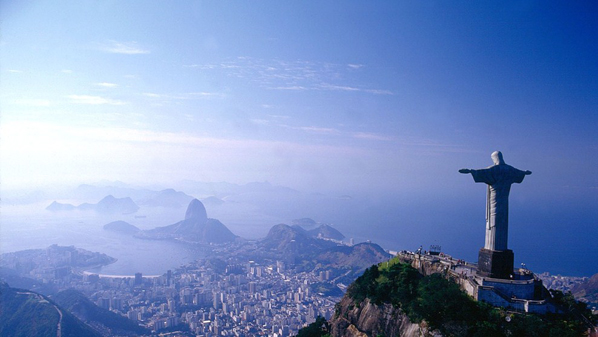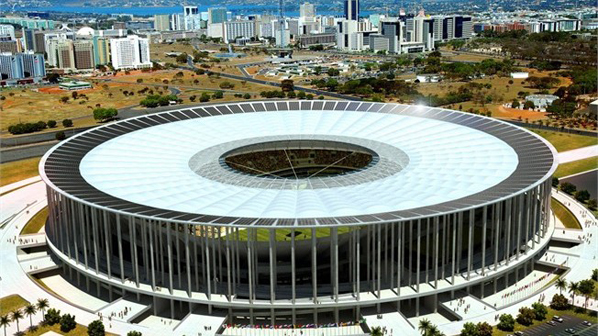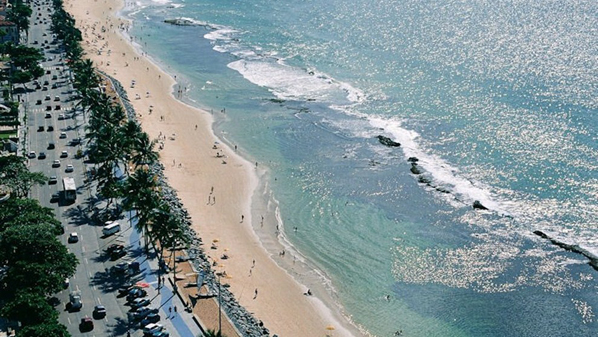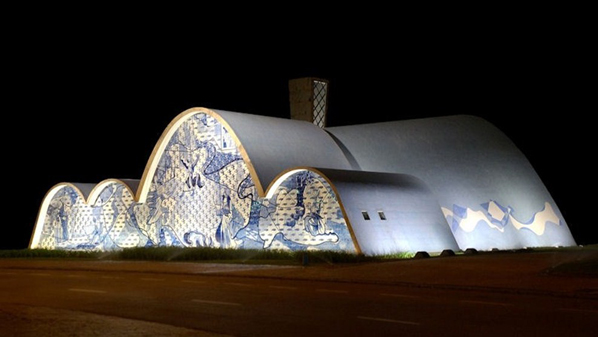FIFA World Cup 2014: Brazilian football profile
With the FIFA World Cup 2014 beginning this week, Breaking Travel News here takes a look at the sporting and cultural history of host’s Brazil.
Founded in 1914 and affiliated to FIFA since 1923, the Confederaçao Brasileira de Futebol boasts a staggering list of honours.
Now only has Brazil claimed five FIFA World Cups, they are also winners of eight Copa Americas, four FIFA Under-20 World Cups, three FIFA Under-17 World Cups, two FIFA Confederations Cups, four FIFA Futsal World Cups, three FIFA Beach Soccer World Cups and dozens of continental trophies.
Few federations have left anything like the same mark on international football.
In fact, the only sour note for the country that produced Pele came in the final of ‘their’ 1950 FIFA World Cup.
Watched by 174,000 stunned supporters packed into the mythical Maracana stadium, the Seleçao let the fourth edition of the Jules Rimet Cup slip from their grasp in a 2-1 defeat to Uruguay.

Rio de Janeiro is the cultural heart of Brazil
Football in Brazil
Football occupies pride of place in Brazil, and although Brazilians are also passionate about volleyball, basketball, tennis, formula-one and other motor sports, only the legendary Ayrton Senna is revered in quite the same way as the country’s most famous exponents of ‘the beautiful game’.
Chief among them is O Rei, Pele, whose name is almost synonymous with Brazilian sport itself, but a whole raft of unique talents have worn the Seleção shirt with distinction down the years: Leonidas, Garrincha, Didi, Vava, Zagallo, Tostão, Zico, Jairzinho, Carlos Alberto, Socrates, Bebeto, Romario, Cafu, Ronaldo and Roberto Carlos.
The list of players who have etched their names into the collective memory is quite literally breathtaking.
Brazilian football continues to produce exceptional new talents, and these days it is superstars Ronaldinho (Ronaldo de Assis Moreira) and Kaka (Ricardo Izecson Santos Leite) who are thrilling football-lovers the world over.

Fortaleza will welcome Uruguay, Germany and Greece among others during the World Cup
History
It is often said that the first European explorer to set foot in the country was Spaniard Vicente Yanez Pinzon, who supposedly landed near the site of modern-day Recife on January 26th 1500.
Officially, however, it is Portuguese Pedro Alvares Cabral who is regarded as the discoverer of Brazil.
His fleet, in search of the Indias, sailed into the South of modern-day Bahia on April 22nd 1500.
Since 1530, the Portuguese Crown implemented a colonising policy that lasted centuries and ended when Dom Pedro I declared the country’s independence on September 7th 1822.
After 1822, Brazil was governed by an imperial dynasty until a military revolt led by Marshal Manuel Deodoro da Fonseca forced Emperor Dom Pedro II to abdicate in November 1889.
The country became a republic and, despite a long period of instability and even military dictatorship between 1964 and 1985, it now enjoys the fruits of democracy.
Current President Dilma Rousseff has held the post since her inauguration on January 1st 2011.

Estadio Nacional de Brasilia, Brasilia
Economy
Predominantly agrarian until recently, Brazil underwent rapid industrial growth throughout the 1960s and 1970s, and by the 1980s possessed a fundamentally modern, diversified economy.
This development went hand in hand with heavy exploitation of its natural resources, in particular coal and iron ore.
Nearly a quarter of the world’s coffee comes from Brazil, with its plantations spread around the states of Sao Paulo, Parana, Espiríto Santo and Minas Gerais.
Likewise, Brazil is one of the foremost producers of sugar cane, used not only to make sugar but also the alcohol that fuels 2.5 million specially-designed vehicles.
Production levels of ricin, cocoa, corn and oranges are among the highest in the world as well, while soy, tobacco, potato, cotton, rice, wheat, manioc and bananas are also produced in large quantities. In addition, sheep and cattle are reared in almost every state.
The Brazilian rainforest is another source of natural riches, including tung oil, rubber, carnauba oil, caroa fibre, medicinal plants, vegetable oils, resins, timber for construction and various woods used in furniture-making.
Brazil has also begun mining fairly recently, again taking advantage of its abundant natural resources.

Recife is one of the most popular tourism destinations in the country
Geography
The largest country in South America, Brazil stretches over almost half of the continent.
With the Atlantic Ocean on its eastern coastline, Brazil shares frontiers with Venezuela, Guyana, French Guyana and Surinam to the north.
Its neighbours to the west are Argentina, Paraguay, Bolivia and Peru, while Colombia is to the north-west and Uruguay directly south. Of all the countries in South America, only Chile and Ecuador do not border Brazil.
With a surface area of 8,547,404 km², Brazil is the fifth largest country on the planet behind Russia, China, Canada and the United States. It covers 4,345 km from north to south between its furthest points and 4,330 km from east to west.
The highest population concentrations are along the Atlantic coastlines, most notably in the two largest cities, Sao Paulo and Rio de Janeiro.
The capital Brasilia has a population of 2,094,000, according to 2003 estimates, and it is situated over 1,000 km inland.

Colombia, Argentina and Costa Rica will visit Belo Horizonte during the games
Figures
Brazil has roughly 190 million inhabitants, making it the fifth most populated country on Earth.
Almost 75 per cent of them are Catholics, while another 26 million are Protestants. Brazil’s Jewish community is very small by comparison.
The country is divided into five regions (Centre-West, North, Northeast, South and Southeast), which are themselves divided into 26 states plus the Federal District that houses Brazilian capital Brasília.
Known for its enormous hydroelectric potential, the Southeast region is the most heavily-populated in Brazil with almost 80 million inhabitants, roughly 40 per cent of the total.
It is also the most densely-populated (84.21 inhabitants per km²) and has the highest urbanisation rate at 90 per cent.
The official language is Portuguese, however many Brazilians speak other languages according to their origins.
German and Italian, for example, are fairly prevalent in the cities of the South.

